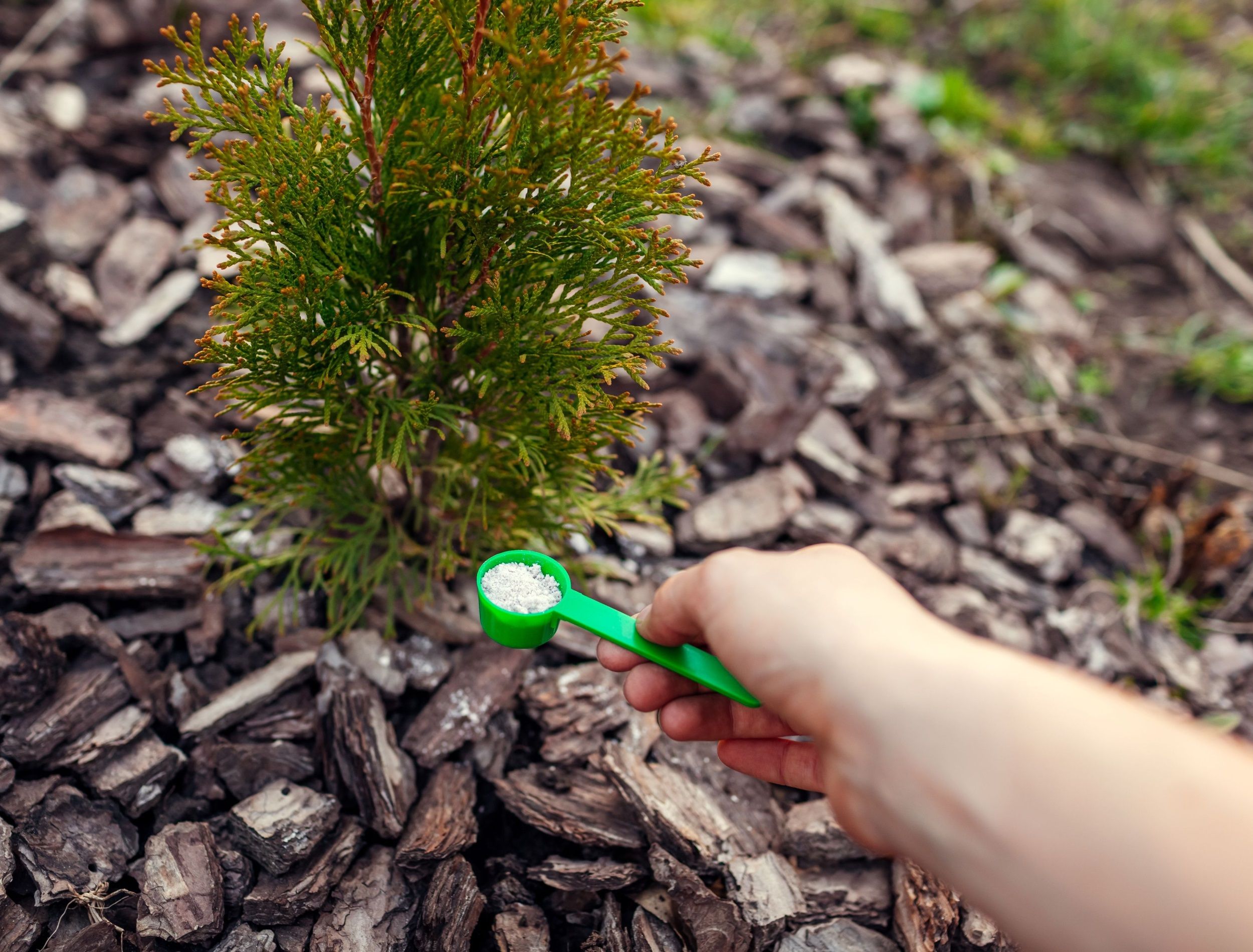As an Amazon Associate CoffeeXplore.com earns from qualifying purchases.
Coffee Grounds for Evergreens: Benefits, Risks & How To Use
If you’re a coffee drinker and a gardener, you’ve probably wondered if you can share your morning habit with your evergreen trees. The idea of turning daily waste into a free, natural fertilizer is tempting, but is it actually safe and effective? You’re looking for a definitive answer on whether coffee grounds are good for evergreens, and this guide is here to provide it.
Yes, coffee grounds are good for evergreens when used correctly. They provide essential nutrients and improve soil structure, but moderation and proper application are crucial to avoid potential risks.
Leveraging extensive analysis of available data and established horticultural patterns, this guide unpacks the science-backed benefits, the critical risks to avoid, and the exact methods for using coffee grounds to help your evergreens thrive. We will explore everything from the specific nutrients they provide to the step-by-step instructions for safe application, ensuring you have the confidence to use this popular home remedy the right way.
Why Coffee Grounds Can Be a Powerful Ally for Your Evergreens
Coffee grounds benefit evergreens by providing a slow-release source of nitrogen for lush foliage and improving soil health through better aeration, water retention, and beneficial microbial activity. While they might seem like simple kitchen scraps, used coffee grounds are packed with potential for your garden. Their value comes from two key areas: the nutrients they contain and the physical improvements they bring to the soil itself.
When you understand these dual benefits, you can see why so many gardeners are keen to use them. They aren’t just a mild fertilizer; they are a comprehensive soil amendment that can create a healthier environment for your evergreen’s roots.
Pro Tip: Think of coffee grounds as more than just fertilizer; they’re a complete soil conditioner for your evergreens.

The Nutrient Boost: More Than Just Nitrogen
Coffee grounds are a rich source of nitrogen, crucial for green foliage, and also contain essential phosphorus, potassium, and trace minerals like magnesium and copper. This nutrient profile makes them an excellent supplement for many evergreens, which rely on these elements for their health and vibrant color.
- Nitrogen: This is the star of the show. Nitrogen is a primary component of chlorophyll, the compound that makes leaves green. A steady supply, like that released from decomposing coffee grounds, promotes the lush, green foliage and strong growth that you want to see in your evergreens.
- Phosphorus and Potassium: While present in smaller amounts than nitrogen, these two macronutrients are vital for overall plant health. They support strong root development, disease resistance, and general metabolic functions within the tree.
- Trace Micronutrients: Coffee grounds also deliver a valuable mix of micronutrients that are essential in smaller quantities. Evidence suggests they contain important minerals like boron, copper, iron, magnesium, and zinc, all of which play a role in various plant enzyme and growth processes.
Building Better Soil Structure
The coarse texture of coffee grounds prevents soil compaction, improves drainage, increases moisture retention, and encourages beneficial earthworms and microbes. The physical benefits of adding this organic matter to your soil are just as important as the nutritional ones. A healthy root system requires a well-structured soil, and coffee grounds can help create it.
Think of it this way: healthy roots need room to breathe, and coffee grounds help create those essential air pockets in the soil.
- Improves aeration and drainage: The fine, gritty particles of coffee grounds help keep heavy clay soils from clumping together, creating channels for air and water to penetrate. This prevents soil compaction and reduces the risk of root rot from waterlogged conditions.
- Boosts water retention: As organic matter, coffee grounds act like a sponge, improving the soil’s ability to hold onto moisture. This is especially beneficial in sandy soils and helps keep your evergreens hydrated during dry spells.
- Feeds beneficial microbes and earthworms: Coffee grounds are a food source for the microscopic organisms in your soil that break down organic material and make nutrients available to plants. Well-established research indicates they are also a favorite food of earthworms, which are invaluable for aerating the soil and producing nutrient-rich castings.
The Gardener’s Guide: How to Use Coffee Grounds on Evergreens Safely
The best ways to use coffee grounds are by adding them to compost, sprinkling a thin layer of dried grounds directly on soil, creating a liquid “tea,” or mixing them into organic mulch. Ready to give your evergreens a coffee boost? Let’s walk through the best ways to do it without causing harm. The key to success is choosing the right method and applying the grounds in moderation. Based on expert consensus from available data, composting is by far the most recommended and safest method.
Here are the proven methods, ranked from safest and most effective to those that require more caution.
- Composting (The Gold Standard): This is the safest and most beneficial way to use coffee grounds. Adding them to your compost pile allows them to break down completely, neutralizing any potential issues and creating a perfectly balanced, nutrient-rich soil amendment.
- Direct Application (With Caution): You can sprinkle grounds directly onto the soil, but you must do so carefully. This method carries risks if done incorrectly, primarily creating a water-repellent barrier.
- Liquid Fertilizer (“Coffee Tea”): Steeping grounds in water creates a gentle liquid feed that can be applied directly to the soil around your plants for a quick nutrient boost.
Method 1: Composting (The Gold Standard)
Add used coffee grounds to your compost pile as a nitrogen-rich “green” material; the finished compost provides balanced, slow-release nutrients for evergreens. Composting is the ideal way to harness the power of coffee grounds because it incorporates them into a biologically active and stable final product. This finished compost will feed your evergreens slowly over time without the risks associated with direct application.
Quick Fact: Adding coffee grounds can help your compost pile heat up and break down faster!
- Treat as a “Green”: In composting terms, coffee grounds are considered a “green” material because of their high nitrogen content, similar to grass clippings.
- Balance Your Pile: You need to balance your “greens” with “browns” (carbon-rich materials like dried leaves, straw, or shredded cardboard). A healthy compost pile should have a good mix of both.
- Mind the Ratio: To maintain a healthy balance, coffee grounds should make up no more than 20-35% of your total compost volume.
- Mix and Wait: Simply add your used grounds to the pile along with your other organic materials and turn the pile occasionally. In a few months, you’ll have dark, rich compost ready to spread around the base of your evergreens.

Method 2: Direct Application (Use Caution)
If applying directly, use only a thin layer of dried coffee grounds (1/2 cup per square yard) and work it into the soil to prevent a water-repellent crust from forming. While this method is faster than composting, it requires careful execution. The biggest mistake gardeners make is applying a thick, wet layer of grounds, which can clump together, dry into a hard crust, and prevent water and air from reaching the roots.
For ultimate clarity, follow these simple do’s and don’ts.
| Do: | Don’t: |
|---|---|
| Use dried, used grounds | Apply fresh, wet grounds |
| Sprinkle a very thin layer | Pile on a thick layer |
| Work lightly into topsoil | Leave a crust on the surface |
| Apply sparingly (1-2x/year) | Use it as your only fertilizer |
Method 3: Liquid Fertilizer or “Coffee Tea”
Create a gentle liquid fertilizer by steeping 1-2 cups of used coffee grounds in 5 gallons of water overnight, then use the solution to water your evergreens. This “coffee tea” is a fantastic way to provide a quick, gentle feed that is easily absorbed by the plant’s roots. This is a great option for a quick and gentle nutrient delivery directly to the roots, especially for potted evergreens.
Here’s the simple recipe:
- Gather Your Grounds: Collect 1-2 cups of used coffee grounds.
- Add Water: Place the grounds in a 5-gallon bucket and fill it with water.
- Let it Steep: Allow the mixture to steep for at least a few hours, or preferably overnight.
- Apply to Plants: Use the resulting light-brown liquid to water the soil around the base of your evergreen trees and shrubs.
Risks & Considerations: The “Truth” About Using Coffee Grounds
The main risks of using coffee grounds are applying them too thickly, which creates a water barrier, and relying on them as a complete fertilizer. Used grounds are nearly pH neutral, not highly acidic. So, what are the potential pitfalls to watch out for? By understanding the common myths and potential downsides, you can use coffee grounds effectively and avoid common mistakes.
Here’s the deal:
- The pH Myth: One of the most persistent myths is that coffee grounds are highly acidic and will drastically lower your soil’s pH. While fresh, unbrewed coffee grounds are acidic, the brewing process neutralizes them significantly. Used coffee grounds have a near-neutral pH, typically between 6.5 and 6.8, which is perfectly suitable for most evergreens.
- The Compaction Problem: This is the most significant real risk. As mentioned, applying a thick layer of grounds directly to the soil can create an impenetrable crust that blocks water and suffocates roots. Always apply a thin layer and work it into the topsoil.
- Moderation is Key: Coffee grounds are a fantastic supplement, but they are not a complete, balanced fertilizer. They are high in nitrogen but lower in phosphorus and potassium. Relying on them exclusively can lead to nutrient imbalances over time.
- Pest Deterrence Bonus: On the plus side, numerous studies and anecdotal reports suggest the texture and scent of coffee grounds can help deter common garden pests like slugs, snails, and even some ants.
When to Fertilize and The Importance of Soil Testing
Fertilize evergreens in early spring or late fall. Always perform a soil pH test before adding amendments like coffee grounds to ensure you’re meeting your specific plant’s needs. Placing the use of coffee grounds into the broader context of proper evergreen care is essential for success.
Before you add anything to your soil, it’s always best to know your starting point. A simple soil test can save you a lot of guesswork!
Timing is crucial. The best time to apply any fertilizer or soil amendment like coffee grounds is in the early spring or late fall, when the plants are not in a state of active, vigorous growth. This allows the roots to absorb the nutrients effectively without stressing the plant.
Most importantly, view coffee grounds as a soil amendment, not a complete fertilizer. They are excellent for improving soil structure and providing a nitrogen boost, but they do not replace a balanced fertilizer that contains the proper ratio of Nitrogen (N), Phosphorus (P), and Potassium (K) that a struggling tree may require. A soil test is the only way to know for sure what your soil is lacking.
To ensure your evergreens get everything they need, investing in a simple soil test kit can be incredibly helpful. It takes the guesswork out of fertilizing and helps you tailor your approach to your garden’s specific conditions.
FAQs About Using Coffee Grounds for Evergreens
What are the main disadvantages of using coffee grounds as fertilizer?
The main disadvantages are that a thick layer can block water and air, they are not a complete, balanced fertilizer, and fresh (not used) grounds can be too acidic for some plants. The primary risks come from improper application. A thick, unmixed layer of grounds can form a hard crust that repels water, and relying on them solely can lead to a nutrient imbalance since they lack sufficient phosphorus and potassium for long-term health.
Which trees or plants do NOT like coffee grounds?
Plants that prefer alkaline soil, such as lavender, rosemary, or certain vegetables like tomatoes and cabbage, may not benefit from coffee grounds, which can slightly lower soil pH over time. While used grounds are nearly neutral, their decomposition can cause a slight acidifying effect. Therefore, it’s best to avoid using them on plants that thrive in “sweet” or alkaline conditions. Always research the specific pH preference of a plant before applying any soil amendment.
Are fresh coffee grounds okay to use on evergreens?
It is not recommended. Fresh coffee grounds are acidic and can harm some plants. Always use used coffee grounds, which have a more neutral pH, or compost them first. The brewing process washes away much of the acidity. Applying fresh, acidic grounds directly to the soil can damage plant roots and negatively impact soil microbes, so it’s a risk not worth taking.
How often should I apply coffee grounds to my evergreens?
Apply coffee grounds in moderation only once or twice a year, ideally in early spring or late fall as part of your regular fertilizing schedule. Over-application is a common mistake. Think of coffee grounds as a gentle, slow-release supplement to be used sparingly. Applying a thin layer once in the spring to boost new growth and once in the fall to prepare for winter is more than sufficient.
Are coffee grounds a good choice for evergreens in pots?
Yes, but use them sparingly. Because soil volume is limited in pots, compaction is a greater risk. The best method for potted evergreens is using a diluted coffee “tea” liquid fertilizer. Sprinkling even a thin layer of grounds in a container can lead to compaction and drainage issues more quickly than in a garden bed. Using the liquid fertilizer provides the nutrients without altering the soil structure.
The Final Verdict on Coffee Grounds for Evergreens
So, are coffee grounds good for evergreens? The answer is a resounding yes, but with critical caveats. When used thoughtfully as a soil amendment and supplemental nutrient source, they are an incredibly valuable, cost-free resource for any gardener. The key is to avoid common pitfalls by prioritizing composting or, at the very least, applying thin, well-mixed layers of dried grounds.
Now you have the complete picture. Go ahead and put those used coffee grounds to work in your garden the right way!
- Compost First: The safest and most beneficial method is always to add coffee grounds to your compost pile first.
- Use Thin Layers: If applying directly, always use a thin layer (less than a half-inch) of dried grounds and mix it into the topsoil.
- Remember the pH: Use only used coffee grounds, as their pH is nearly neutral and safe for most evergreens.
- Supplement, Don’t Replace: View coffee grounds as a soil conditioner and nitrogen supplement, not a complete, balanced fertilizer.
Last update on 2025-12-12 / Affiliate links / Images from Amazon Product Advertising API

